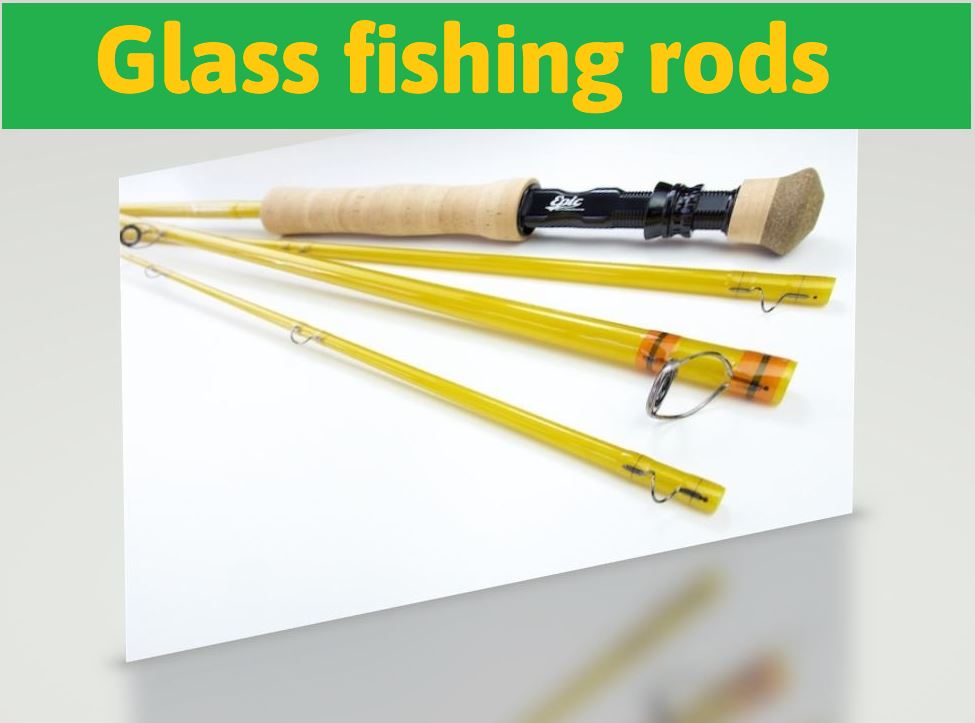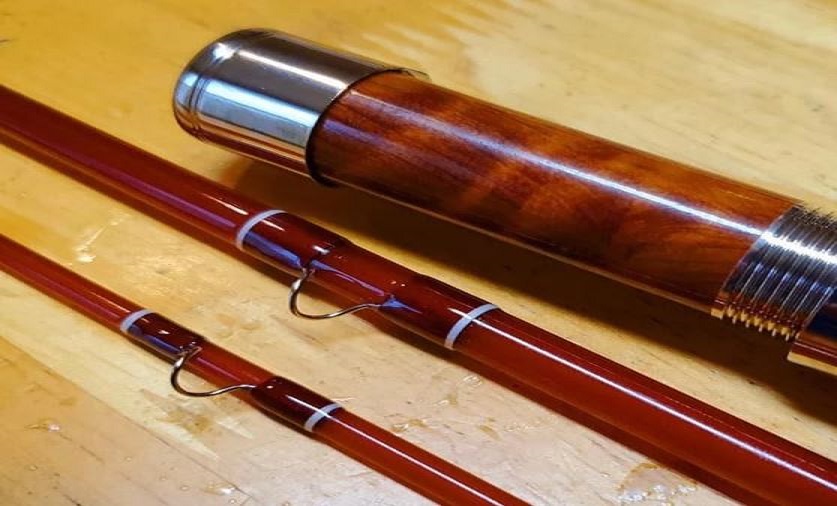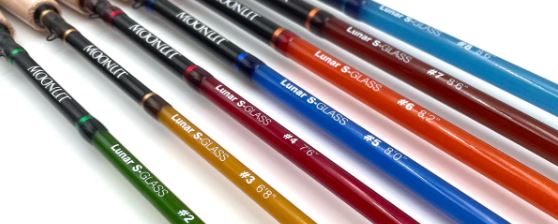Glass fishing rods are Used With this experience, we can easily learn more from experts about what glass fishing rods are used for.
Fishing enthusiasts often seek out Flexibility Glass fishing rods for their exceptional ability to enhance the fishing experience, particularly when targeting finesse fish like crappie or trout. Made from either fiberglass or a composite material incorporating glass, these rods are known for their robustness and ability to withstand stress without breaking, making them a reliable choice for anglers.

What are glass fishing rods used for? The forgiving nature of glass fishing rods allows for better shock absorption, which is crucial when using lighter lines and tackles. This makes them ideal for beginners and experienced fishermen who appreciate the traditional feel and slower action that glass fishing rods offer. Their design helps to prevent fatigue during long days on the water, ensuring that every cast is as enjoyable as the first.
What are glass fishing rods used for?
Glass fishing rods are used primarily for freshwater and saltwater fishing. They are known for their durability, flexibility, and affordability compared to other types of fishing rods, such as graphite or carbon fiber rods.
- Here are some common uses for flexible glass fishing rods:
- Casting: Glass rods are often used for casting techniques, such as baitcasting or spinning. They can handle heavier lures and lines, making them suitable for targeting larger fish species like bass, pike, or catfish.
- Trolling: Glass rods are excellent for trolling, where anglers tow bait or lure behind a moving boat. Their flexibility helps absorb the shock of strikes and sudden movements of the fish.
- Bottom fishing: Glass rods are suitable for bottom fishing methods, such as jigging or bottom bouncing. Their sturdy construction allows anglers to apply sufficient pressure to set the hook and reel in fish from deep waters.
- Live bait fishing: Glass rods are often preferred for fishing with live bait, such as worms or minnows. Their moderate action allows for a more forgiving hookset, reducing the risk of tearing the bait or losing the fish.
- Inshore saltwater fishing: Glass rods can handle the harsh conditions of saltwater environments and are commonly used for inshore fishing for species like redfish, snook, and trout.
Overall, glass fishing rods are versatile and suitable for various fishing techniques and environments.

Introduction To Flexibility Glass Fishing Rods
When anglers ponder the quintessential tool of their trade, the fishing rod springs to mind. flexibility Glass fishing rods, heralded for their durability and versatility, represent a chapter in the ongoing story of angling innovation. These rods accommodate a variety of fishing styles and skill levels, making them a steadfast choice for both novices and seasoned fishermen alike. Known for their forgiving bend and robustness, glass rods maintain a loyal following. Join us as we delve into the world where tradition meets modern-day angling finesse through the lens of glass fishing rods.
The Evolution Of Fishing Rod Materials
Fishing rods have journeyed through a remarkable transformation throughout history. From the rudimentary cane poles of yesteryear to the advanced materials of today, each iteration has brought with it a new wave of innovation:
- Bamboo was once the premier choice for rod construction, offering flexibility and strength.
- Fiberglass emerged in the 1940s, heralding a new era of affordability and durability in rod design.
- Graphite: Introduced in the 1970s, graphite rods set a new standard for lightweight sensitivity and power.
- Composite Blends – Combining materials like graphite and fiberglass to achieve an optimal balance of features.
Characteristics Of Glass Fishing Rods
The attributes of glass fishing rods are distinctive, marked by a blend of performance and reliability. Notable characteristics include:
| Feature | Benefit |
|---|---|
| Flexibility | Provides a forgiving action, reducing the chance of line breaks and hook pulls. |
| Toughness | Capable of withstanding rigorous use and the harsh conditions of various fishing environments. |
| Responsiveness | Offers better shock absorption, making it ideal for targeting species with delicate bites. |
Comparison With Other Fishing Rod Materials
Understanding the relative strengths and weaknesses of glass fishing rods compared to other materials is crucial in making an informed decision:
- Graphite rods are known for their extreme sensitivity and lightness but tend to be less durable and more expensive than their glass counterparts.
- Fiberglass rods are closer to glass rods in terms of flexibility and toughness, but they often lack the refined sensitivity of graphite.
- Composite rods attempt to bridge the gap, but they may not match the peak performance characteristics of the specialized materials.
In essence, glass fishing rods strike a unique balance, delivering a user-friendly experience without the steep learning curve associated with more specialized and sensitive rods. Whether you’re embarking on your angling journey or simply expanding your gear repertoire, glass fishing rods deserve consideration for their time-tested durability and all-around performance.
Types Of Glass Fishing Rods
Fishing enthusiasts often seek the perfect blend of durability and flex in a fishing rod, which is why glass fishing rods are prized for their resilience and performance. Whether you’re battling a stubborn catfish or delicately presenting a fly to a trout, understanding the different types of glass rods can enhance your angling experience. Let’s delve into the various glass fishing rods available, each tailored for diverse fishing scenarios. Bold action awaits every angler with the right glass rod in their arsenal.
Solid Glass Fishing Rods
Solid glass rods are renowned for their virtually indestructible nature. They sport a robust build, perfect for beginner anglers or those targeting larger species in rugged conditions. These rods are incredibly resistant to snapping, making them ideal for:
- Ice fishing is where they excel at withstanding the cold, harsh environment.
- Deep-sea fishing provides the sturdiness needed to reel in heavy catches.
Their sturdy construction also makes them less sensitive to light bites, which may be a consideration for those seeking the subtle feedback often needed in freshwater scenarios.
Tubular Glass Fishing Rods
If weight and sensitivity are more your focus, tubular glass rods might be the game-changer in your tackle box. Unlike their solid counterparts, tubular rods are hollow, making them lighter and more flexible. This construction lends itself well to a range of fishing styles, including:
- Long sessions with reduced angler fatigue are a benefit.
- Use lighter lines and lures, enabling a more nuanced approach.
They bridge the gap between the heavy-duty prowess of solid rods and the need for increased sensitivity in certain fishing applications.
Glass Composite Fishing Rods
For those in pursuit of versatility, glass composite rods present an attractive compromise. These rods fuse the benefits of glass fibers with other materials like graphite, resulting in tools that are strong yet sensitive to the bite. They are suitable for:
- All-round angling, where a blend of flexibility and strength is desired.
- Those targeting a wide range of fish species, from small trout to larger bass or pike,.
- Anglers who value the durability of glass but crave the performance characteristics of graphite.
Glass composite rods offer anglers a tailored approach, combining the best of both worlds to provide a powerful, responsive tool for various fishing conditions.

Advantages Of Using Glass Fishing Rods
For centuries, anglers have sought the best tools to ensure a successful outing. Among them, glass fishing rods stand out for offering a unique combination of performance and durability. When discussing the materials fishing rods are made of, glass fiber occupies a special niche. These rods cater to specific fishing situations where their attributes shine. This piece dives deep into the benefits these durable, flexible, and cost-effective rods offer.
Durability In Harsh Conditions
One of the hallmark strengths of glass fishing rods is their resiliency in the face of adverse weather and environmental conditions. Anglers who battle the elements, whether fishing in saltwater or braving the cold, can rely on these rods. Glass fibers naturally resist corrosion, maintaining their integrity even after repeated exposure to salty spray or icy blasts. You can expect a glass rod to outlast many other materials, making it a trustworthy ally for any fishing expedition.
Flexibility And Tensile Strength
Another compelling reason to choose glass fishing rods is their superior flexibility coupled with incredible tensile strength. Unlike stiffer materials that can snap under pressure, glass rods boast a ‘give’ that allows them to bend without breaking. This elasticity translates to better shock absorption when a large fish strikes. As a result, glass rods excel particularly in catching hard-fighting fish, offering anglers fewer break-offs and escaped trophies.
The rod’s pliability also contributes to a smoother casting experience—a boon for those who value precision as much as power. Long casts become less cumbersome, a feature especially appreciated by novices seeking to hone their fishing skills.
Cost-effectiveness For Anglers
From a financial standpoint, glass fishing rods present a major advantage: affordability. Relative to rods crafted from advanced composites or high-end materials, they provide a budget-friendly option without compromising quality. Anglers looking to outfit themselves with multiple rods for different types of glass fishing rods find this aspect particularly attractive.
Furthermore, the longevity of glass rods means a prolonged investment period. Rather than frequently replacing equipment, anglers can allocate funds to other aspects of their hobby or potentially invest in higher-quality reels and lines to complement their reliable glass rod.
Ideal Fishing Conditions For Glass Fishing Rods
Welcome to the in-depth exploration of the ideal conditions for using glass fishing rods. Whether you’re a seasoned angler or a beginner, understanding when to best utilize glass rods can significantly enhance your fishing experience. These rods are renowned for their flexibility, offering superb play when you hook a fish, thus making your angling both exciting and efficient. Let’s dive into the specific scenarios where glass fishing rods truly shine.
Freshwater vs. Saltwater Applications
Freshwater Vs. Saltwater Applications
Glass fishing rods excel in a variety of aquatic environments, and each setting can influence their performance.
- Freshwater Fishing: Glass rods are highly effective in freshwater venues like lakes, rivers, and streams. Their flexibility allows for accurate casting of light lures and enhances the detection of subtle bites, making them perfect for catching species such as trout and panfish.
- Saltwater Fishing: For saltwater, glass rods offer the durability needed to resist corrosion caused by salty air and water. However, glass rods can be a bit heavier, which might be a factor to consider when planning longer fishing sessions from shore or boat.
Targeting Specific Fish Species
Targeting Specific Fish Species
Each fish species presents a unique challenge, and glass rods are no exception to providing the optimal equipment for the job. The innate ‘give’ of glass rods makes them ideal for lighter biting fish, allowing you to feel the slightest tug.
| Fish Species | Reasons to Use Glass Rods |
|---|---|
| Bass | The moderate action of glass rods helps prevent pulling the lure out of the fish’s mouth, giving an advantage when going for bass. |
| Walleye | With sensitive tips, glass rods enhance the detection of the soft bite of walleye. |
| Crappie | The flexibility of glass rods is key to a secured hook-set without tearing the delicate mouth of crappie. |
Weather and Environmental Factors
Weather And Environmental Factors
Environmental conditions play a pivotal role in selecting the right fishing gear. Glass rods are particularly suited to colder climates; they maintain their flexibility and performance even when temperatures drop, unlike their graphite counterparts that can become brittle.
Moreover, in windy conditions, the weight of glass rods offers more control and reduces the effect of gusts on the line, ensuring accurate casts. Consider the following factors:
- Temperature
- Wind strength and direction
- Water clarity
Overall, glass fishing rods are not only about nostalgia; they’re about choosing a rod that matches the conditions at hand for an effective and enjoyable fishing experience.
Techniques And Tactics With Glass Fishing Rods
Fishing enthusiasts often overlook the unique benefits of glass fishing rods, but these flexible and durable tools provide distinct advantages in several fishing techniques. Anglers appreciate the sensitivity and the forgiveness that glass rods offer, especially when targeting hard-hitting fish. By exploring various tactics that complement the properties of glass rods, you can step up your fishing game. Let’s delve into some specifically tailored techniques.
Cranking And Reaction Baits Technique
Glass fishing rods excel when using cranking baits and other reaction lures. Their natural flexibility allows for better hook sets, as the rod can give more when a fish strikes, ensuring the lure isn’t quickly ripped away from the fish. When employing this technique:
- Use a moderate-speed retrieve to keep the crankbait in the strike zone for as long as possible.
- Focus on maintaining a steady rhythm to induce strikes from tentative fish.
- Allow the rod to load up on the strike, giving the fish a split second longer to fully take the bait.
Bottom Fishing And Live Bait Setups
For those who swear by bottom fishing, glass rods with their slower response can be particularly effective. Live bait setups can benefit from the soft action of glass, which mimics natural movement in the water. Tactics include:
- Positioning baits near structures where fish tend to congregate.
- Using a slip-sinker rig to allow the fish to take the bait without feeling resistance.
- Waiting for a definitive rod bend before setting the hook to ensure the fish has the bait securely.
Slow Action Rod Techniques
The parabolic bend of glass rods is ideal for slow-action techniques that require delicate presentations and finesse. These rods are not just for novice anglers but for any situation that requires a softer touch. Effective techniques involve:
| Technique | Benefits | Tips |
|---|---|---|
| Drop Shotting | Gentle presentation, more natural drop | Use slight rod movements to animate the bait subtly |
| Float Fishing | Smooth casting, better shock absorption | Keep line tight for better bite detection |
Maintenance And Care For Glass Fishing Rods
Maintenance and care for glass fishing rods are crucial elements that significantly affect their performance and lifespan. Glass fishing rods, recognized for their durability and flexibility, still demand regular upkeep to maintain their pristine condition. Proper cleaning, storage, and handling can preserve the smooth action and sensitivity that anglers cherish in these rods. Let’s explore the best practices for maintaining your glass fishing rod to ensure it stays in top-notch shape for your next angling adventure.
Cleaning And Storage Tips
Keeping your glass fishing rod clean and safe is the first step to ensuring its longevity. Dirt, salt, and residues can damage the rod over time, while proper storage prevents unnecessary wear and tear.
- After each use, wash the rod with mild soapy water to remove any debris and salt.
- Rinse the rod thoroughly with fresh water and dry it with a soft cloth to prevent water spots.
- Use a rod cover or sleeve to protect it from dust and sunlight when not in use.
- Store the rod in a horizontal position or hang it vertically to avoid bending or warping.
- Avoid storage in hot or moist areas to prevent damage to the rod’s materials and coatings.
Repairing Scratches And Nicks
Even with the utmost care, glass fishing rods may acquire small scratches and nicks. These imperfections can be minor, but it’s important to address them promptly.
- Inspect your rod regularly for any signs of wear and tear, focusing on areas around the guides and the ferrules.
- For small scratches, use a fine grit sandpaper gently to smooth out the affected area.
- Apply a light coat of rod varnish to seal and protect the sanded area.
- Allow the varnish to cure fully according to the manufacturer’s instructions for optimal protection.
Longevity Best Practices
Embracing best practices for the care of your glass fishing rod is the key to its long-term performance. Here are some additional tips to further extend the life of your rod:
| Practice | Description |
|---|---|
| Avoid High Impact | Prevent the rod from hitting hard surfaces or sharp edges, which could cause cracking or breaking. |
| Check for Loose Parts | Regularly tighten reel seats and guides to maintain stability and sensitivity. |
| Handle with Care | Use the proper technique when casting and retrieving to prevent overstressing the rod. |
| Regular Inspection | Periodically examine the entire length of the rod for signs of stress or damage. |
Remember, regular maintenance not only extends the life of your glass fishing rod but also ensures it continues to perform at its best. Implementing these care tips will help you make the most out of every fishing trip, creating memories and catches that last a lifetime.
Frequently Asked Questions: What Are Glass Fishing Rods Used For
What Is The Advantage Of A Glass Rod?
A glass rod is beneficial for its non-reactive nature, allowing the safe stirring of various chemical compounds without contamination.
What Do You Use Glass Rods For?
Glass rods are used for stirring mixtures in laboratories and for applying substances in various arts and crafts projects.
Are Glass Rods Better Than Graphite?
Glass rods are not inherently better than graphite; each has advantages depending on the application. Glass rods offer better shock absorption for fishing, while graphite rods are lighter and more sensitive.
Is A Glass Rod Good For Spinnerbaits?
A glass rod offers superior sensitivity for detecting spinnerbait vibrations, making it a good choice for clarity in bites and lure feedback.
Conclusion
Glass fishing rods offer precision, sensitivity, and a traditional touch to angling adventures. They’re specially crafted for enthusiasts who appreciate finesse over power. Ideal for specific fishing scenarios, they provide distinct advantages. Embrace the heritage of fishing with a glass rod and experience its unique charm on your next outing.
